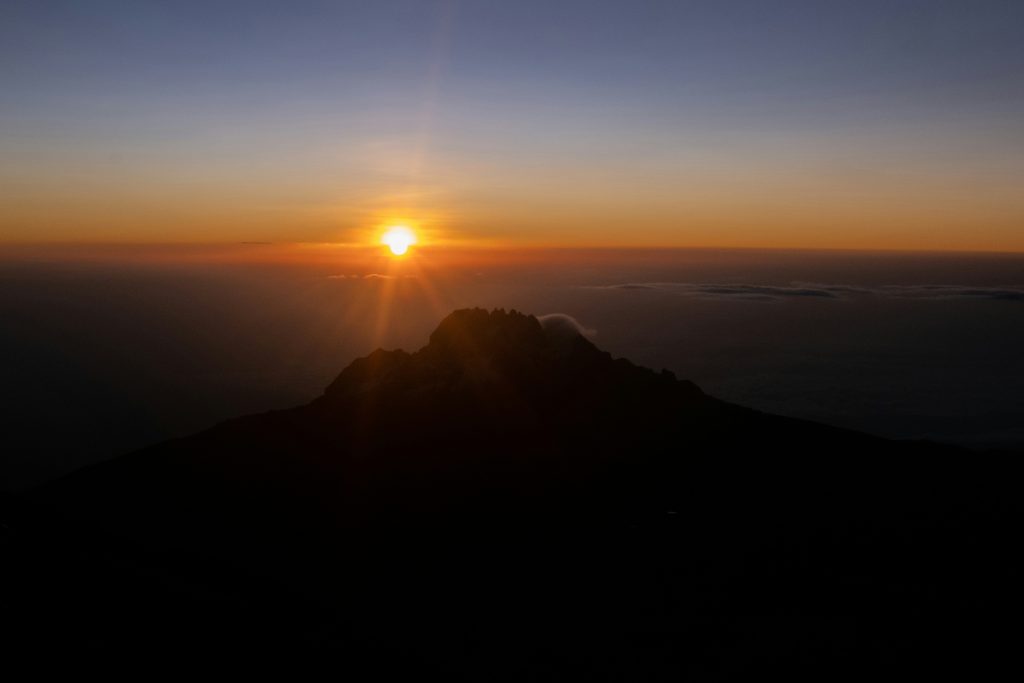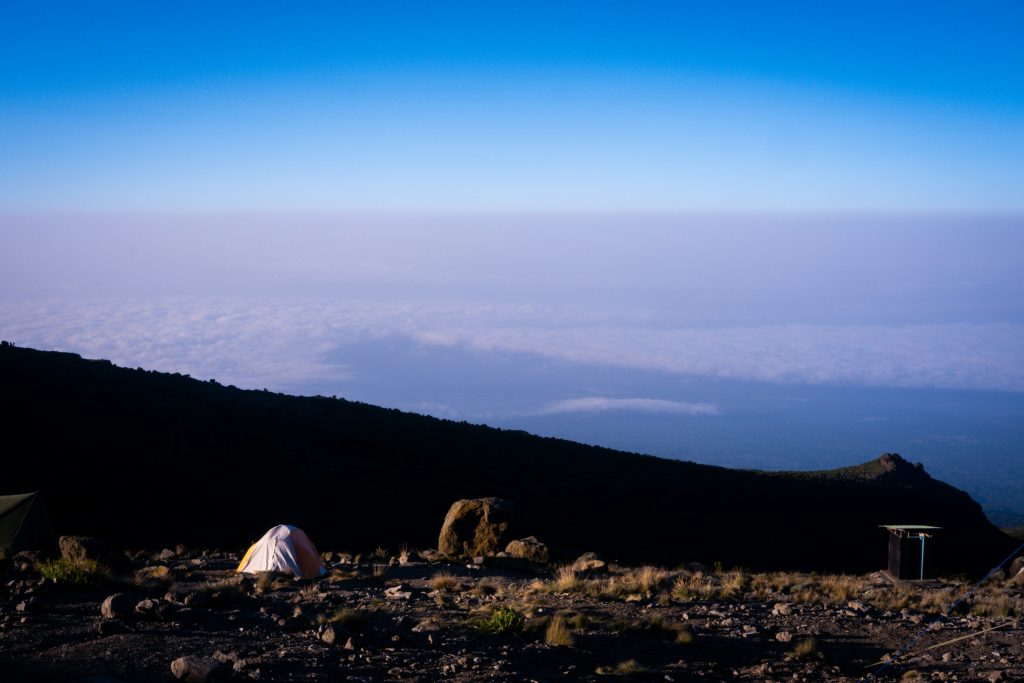Mountain Trekking Packages With Spirit Of Kilimanjaro
Your Trailblazers to the Summit
At Spirit Of Kilimanjaro, we believe a great adventure is built on trust, expertise, and a commitment to the wild places we explore. Our promise is to deliver an unforgettable trekking experience where every detail is taken care of, allowing you to focus on the journey and the breathtaking beauty around you.
Overview
Routes & Packages:
Itineraries
Pricing & Booking
About Us
FAQ & Resources
Overview
Tanzania is an adventurer’s canvas, inviting you to conquer the heart of Africa’s wilderness. Imagine ascending a volcanic crater, your path winding through landscapes teeming with wildlife, all leading to breathtaking, high-altitude panoramas. While the legendary, snow-capped Mount Kilimanjaro stands as a global icon of adventure and the iconic Mount Meru offers a unique “safari climb” through a national park, the country’s diverse terrain offers so much more for the avid trekker.
Beyond these giants, a world of unforgettable trekking awaits.
Routes & Packages:
This is where the adventure begins. This section isn’t just a list; it’s a guide to finding the trek that calls to you. We’ve meticulously curated routes to fit every type of adventurer, from the first-time trekker to the seasoned mountaineer. Here, you’ll explore the unique profiles of each path, from the most popular and scenic ascents to the quiet, remote trails. Use this page to compare each journey based on difficulty, duration, and the kind of unforgettable experience you’re seeking.
Itineraries
Dive into the details of your dream climb. This tab reveals the day-by-day blueprint of our expeditions, transforming your trip from a concept into a tangible reality. We break down each day’s journey, from the specific camp you’ll rest at to the altitude you’ll reach and the stunning landscapes you’ll traverse. On this page, you’ll learn about our expert-designed acclimatization plans—such as the crucial “climb high, sleep low” strategy on Kilimanjaro’s Machame route—and discover how we ensure a safe, steady, and successful ascent.
Pricing & Booking
We believe in complete transparency and a hassle-free booking experience. This page clearly outlines the all-inclusive costs of your adventure, so there are no surprises. You’ll find a detailed breakdown of what is covered, from all national park fees and expert guide salaries to meals, transfers, and high-quality camping equipment. We also provide a simple, step-by-step guide to our booking process, ensuring your reservation is secure and confirmed with ease, leaving you to focus on preparing for your trek.
About Us
Meet the people behind the passion. Our company was founded on a shared love for the mountains and a commitment to responsible, life-changing adventures. This page tells our story—our mission to lead safe and sustainable treks, our dedication to supporting local communities, and the incredible people who make it all possible. Here, you’ll be introduced to our certified, experienced local guides who don’t just lead the way but share their deep knowledge of the land, culture, and history. We’re more than a tour company; we’re your partners on the path to the summit.
FAQ & Resources
We’ve gathered answers to the most common questions to help you prepare for your journey with confidence. This section is your go-to resource for everything you need to know, from logistical details like visa requirements and what to pack, to critical topics like preventing altitude sickness and our safety protocols. We’ve created this hub of information to empower you, ensuring you feel fully prepared and excited for your adventure.

Main routes up Mt Kilimanjaro
The Machame Route is one of the most popular and highly recommended trails for climbing Mount Kilimanjaro. Known as the “Whiskey Route” because of its reputation for being tougher than Marangu, it offers trekkers some of the most spectacular scenery on the mountain. Starting at Machame Gate in the lush rainforest zone, the path winds through giant heather and moorlands before reaching the dramatic Shira Plateau. Climbers pass unique landmarks such as the Lava Tower, the Barranco Valley, and the iconic Barranco Wall, which adds an adventurous climbing experience without technical difficulty. The trail’s diverse landscapes give trekkers an excellent introduction to Kilimanjaro’s different ecological zones, from rainforest to alpine desert, before the final push to the snow-covered summit.
Although it is considered physically challenging due to its steep ascents and descents, the Machame Route provides one of the best acclimatization profiles with the “climb high, sleep low” approach. The trek can be completed in six days, though a seven-day itinerary is highly recommended to improve summit success. Its popularity also means it can be busy, but the incredible beauty and high success rate make it a favorite for both beginners with determination and experienced climbers alike. For those seeking a balance between adventure, breathtaking scenery, and strong summit chances, Machame is often considered the best choice.
The Marangu Route is the oldest and most established path up Mount Kilimanjaro, earning the nickname the “Coca-Cola Route” because soft drinks used to be available along the way. It starts at Marangu Gate on the southeastern side of the mountain and is unique because it offers hut accommodation rather than camping, with dormitory-style sleeping arrangements and basic facilities such as dining halls. The trail itself is straightforward, with a steady and gradual incline that takes climbers through rainforest, moorlands, and alpine desert, ultimately leading to Gilman’s Point and the summit at Uhuru Peak. While the ascent and descent follow the same path, which can limit variety in scenery, it remains one of the most accessible routes.
Marangu is often chosen by climbers looking for comfort and simplicity, especially those who prefer not to camp. However, it has a shorter itinerary—typically five to six days—which makes acclimatization more difficult and reduces the overall success rate compared to longer routes. Despite this, many trekkers are attracted to its cultural significance, as it is the traditional route used by early explorers. For those seeking a shorter climb, moderate difficulty, and hut accommodations rather than tents, Marangu remains a classic and practical option.
The Lemosho Route is widely regarded as one of the most beautiful ways to climb Kilimanjaro, offering a quiet and scenic start on the western slopes of the mountain. Beginning at Londorosi Gate, the trail first cuts through untouched rainforest where trekkers may spot wildlife such as colobus monkeys and exotic birds. After a few days, the path reaches the Shira Plateau, a vast volcanic plain that provides panoramic views across the mountain. From there, the route joins up with the Machame trail, continuing toward landmarks like Lava Tower, the Barranco Valley, and the impressive Barranco Wall before the final approach to the summit via Stella Point.
One of the greatest advantages of the Lemosho Route is the time it allows for acclimatization. With itineraries ranging from seven to eight days, trekkers have a gradual ascent profile that significantly improves summit success rates. While it is not the easiest route, its combination of moderate difficulty, varied landscapes, and lower initial foot traffic makes it an excellent choice for climbers seeking both adventure and higher chances of success. Many climbers describe Lemosho as offering the perfect balance of challenge, scenery, and acclimatization—ideal for those with a bit more time to fully experience the mountain.
The Londorosi Route is less of a standalone route and more of a western entry point into Kilimanjaro’s trail system, often serving as the gateway for the Lemosho, Shira, and Northern Circuit routes. Trekkers begin at Londorosi Gate and are immediately immersed in dense rainforest, home to a variety of flora and fauna. The trail then rises onto the Shira Plateau, one of the most dramatic volcanic landscapes on the mountain, where wide-open views of Kibo Peak and Mount Meru dominate the horizon. Unlike the busier Machame or Marangu routes, Londorosi offers a quieter and more remote start, giving climbers a strong sense of wilderness and solitude.
Because Londorosi is usually combined with other trails, the duration of the climb varies depending on the chosen route, usually spanning seven to nine days. Trekkers benefit from a western approach that provides excellent acclimatization profiles and diverse scenery. While it may not be as famous by name as Machame or Lemosho, Londorosi is an essential part of Kilimanjaro’s trekking system and is often favored by climbers who want to avoid large crowds at the start of their climb.
The Rongai Route is the only trail that approaches Kilimanjaro from the northern side, near the border with Kenya. It is known for being less crowded and for offering a more remote wilderness experience compared to the southern routes. The trail begins in a drier area, passing through pine forests and open countryside before ascending into moorland and alpine desert. Trekkers enjoy unique views across the Kenyan plains and often encounter fewer hikers, making the climb peaceful and serene. Because of its location, Rongai is also less affected by heavy rains, making it a good option during the wet season.
The route generally takes six to seven days, with a gentle and gradual ascent that makes it one of the easier routes for acclimatization. It eventually joins with the Marangu Route at Kibo Hut for the final summit push. Rongai is ideal for trekkers seeking a quieter trail, a steady climb, and an excellent balance between challenge and accessibility. Its combination of solitude, scenic variety, and higher summit success rates makes it a favorite among those looking for a unique perspective of Kilimanjaro.
The Shira Route shares much in common with Lemosho, as both begin on the western slopes of Kilimanjaro and traverse the Shira Plateau. However, Shira differs because it starts at a higher altitude—around 3,500 meters—after a vehicle transfer directly to Shira Gate. This rapid gain in elevation can pose risks for altitude sickness early on, as climbers begin their trek in the heath and moorland zone rather than gradually ascending from the rainforest. The trail then continues across the Shira Plateau, passing striking landscapes of volcanic rock and sweeping vistas before joining the Machame Route.
The Shira Route typically takes six to eight days, and while it offers stunning scenery and a quieter start, it is best suited for trekkers who already have some acclimatization experience or are confident in their ability to adapt quickly to altitude. It is less popular than Lemosho but equally rewarding for those who choose it. With fewer crowds and similar scenic highlights—such as Lava Tower and Barranco Wall—Shira is a great alternative for experienced adventurers who want to begin their climb higher up the mountain.
The Northern Circuit is the newest and longest established route on Kilimanjaro, widely praised for offering the ultimate trekking experience. Starting on the western side at Londorosi Gate via the Lemosho trail, it crosses the Shira Plateau before branching off to circle around the northern slopes of the mountain. This route provides unmatched variety in scenery, from lush rainforest to barren alpine desert, while also offering trekkers the rare opportunity to explore the less-visited northern side of Kilimanjaro. Camps like Moir Hut and Buffalo Camp give climbers a sense of isolation and wilderness rarely experienced on busier trails.
With a duration of eight to nine days, the Northern Circuit offers the best acclimatization profile of all Kilimanjaro routes, making it the trail with the highest summit success rate. The longer itinerary allows trekkers to adjust gradually to the altitude while enjoying diverse landscapes and fewer crowds. Though it demands more time and endurance, the rewards are immense: panoramic views, solitude, and the strongest chance of reaching Uhuru Peak. For those who want the most comprehensive and rewarding Kilimanjaro experience, the Northern Circuit is unmatched.
The Umbwe Route is considered the most difficult and demanding trail on Kilimanjaro, known for its steep and direct ascent. Starting at Umbwe Gate on the southern slopes, the route climbs rapidly through dense rainforest and up narrow ridges, gaining altitude quickly with little opportunity for gradual acclimatization. The trail is less traveled and very quiet, offering trekkers a raw and adventurous experience. After the steep initial days, the route merges with the Machame Route near Barranco Camp, continuing through familiar landmarks like the Barranco Wall and Lava Tower before heading toward the summit.
Because of its steepness and limited time for adaptation, Umbwe has one of the lowest summit success rates and is recommended only for highly experienced and physically strong climbers. Despite its challenges, those who take on the Umbwe Route are rewarded with solitude, unspoiled wilderness, and a sense of conquering Kilimanjaro in its most direct form. For climbers seeking adventure, toughness, and an off-the-beaten-path experience, Umbwe is the ultimate challenge on the mountain.
Find Your Path to the Roof of Africa
The legendary summit of Kilimanjaro beckons. With several distinct paths leading to the Roof of Africa, your journey can be as unique as the mountain itself. Choosing the right route is a crucial step in your adventure, with each path offering a different experience in terms of scenery, difficulty, and acclimatization. Explore our most popular trekking routes below and find the perfect path to your unforgettable summit experience.
The Ascent of Mount Meru
The ascent of Mount Meru is a rare and unforgettable adventure that perfectly combines a classic mountain climb with an incredible walking safari. As Kilimanjaro’s majestic neighbor, this lesser-known gem offers a spectacular and challenging journey through the heart of Arusha National Park. Trek through lush forest and volcanic landscapes, spotting wildlife along the way, all while being treated to breathtaking views of its grand volcanic crater and Kilimanjaro in the distance. Discover the details of this spectacular 3 or 4-day trek and experience the true wild side of Tanzania.

Short Climb
3 Days | 2 Nights
The 3-day itinerary is a fast-paced and demanding trek designed for experienced and very fit hikers. This route is challenging due to the rapid ascent and a long, strenuous summit day. It’s often chosen by climbers who have limited time or are looking for an intense physical challenge.
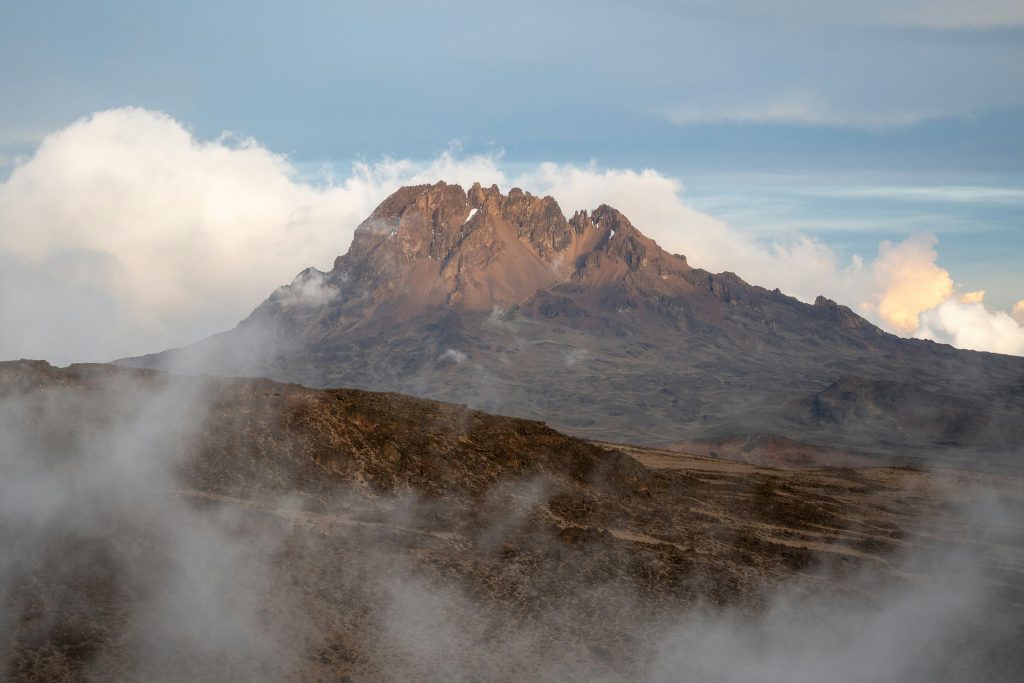
Long Climb
4 Days | 3 Nights
The 4-day itinerary is the most recommended option for climbing Mount Meru. The extra day allows for a much more comfortable pace, better acclimatization, and a more enjoyable experience. The summit day is less grueling, as the descent is split over two days, which significantly improves summit success rates.
Our Core Values
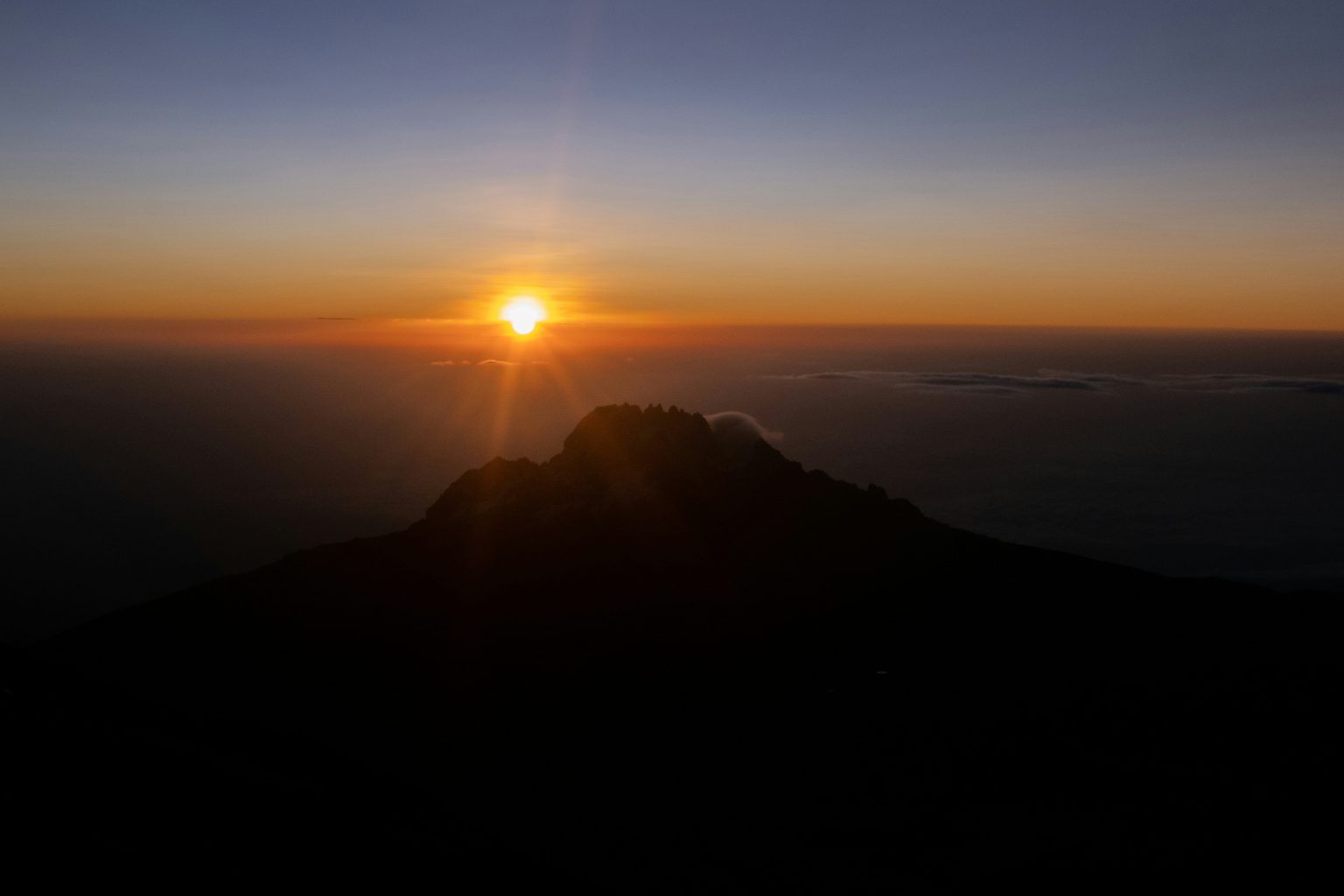
Expert Guides
Embark on your journey with absolute confidence, knowing you are led by the best in the business. Our certified and experienced local guides are not just experts in navigation and safety; they are passionate storytellers and stewards of the mountains.

Safety First: Your Well-being, Our Highest Priority
Your safety is the foundation of every expedition we lead. We adhere to and exceed the highest industry standards, employing rigorous safety protocols and providing our guides with advanced wilderness first-aid training.
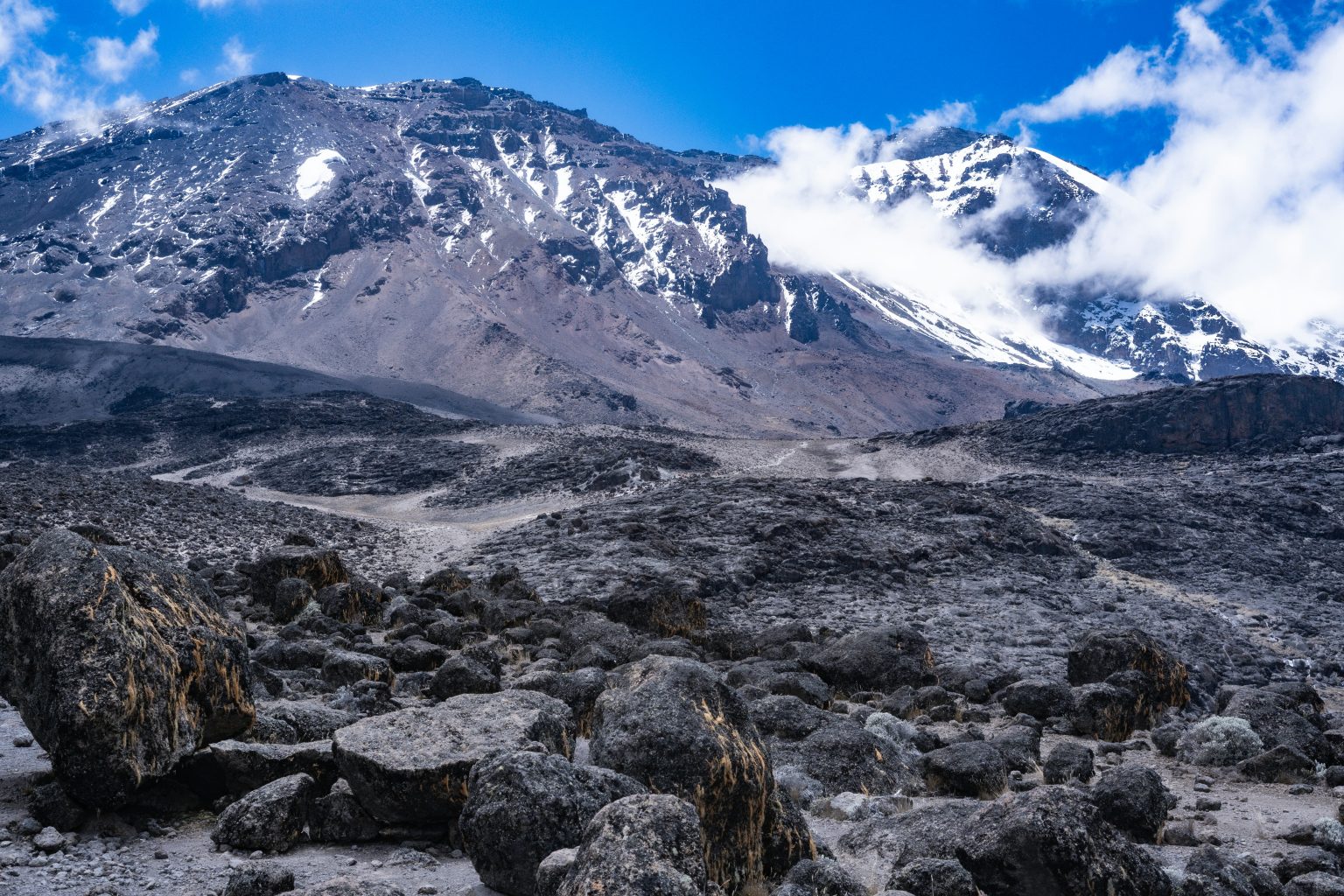
Sustainable Treks: Travel with a Purpose
Join us in a commitment to responsible and eco-friendly tourism. We are dedicated to preserving the stunning environments we explore and supporting the local communities that call them home. Our treks are designed to minimize environmental impact through Leave No Trace principles.










Get a Newsletter
* Join the newsletter to receive our best monthly deals
- CLIMB KILIMANJARO
- KILIMANJARO CLIMBING GUIDE
- MOUNT MERU CLIMB
- ARUSHA
- MOSHI
Enquire Today
Start Planning Your Tanzania Holiday
Please fill in all fields – an email will be sent with complete journey details.

